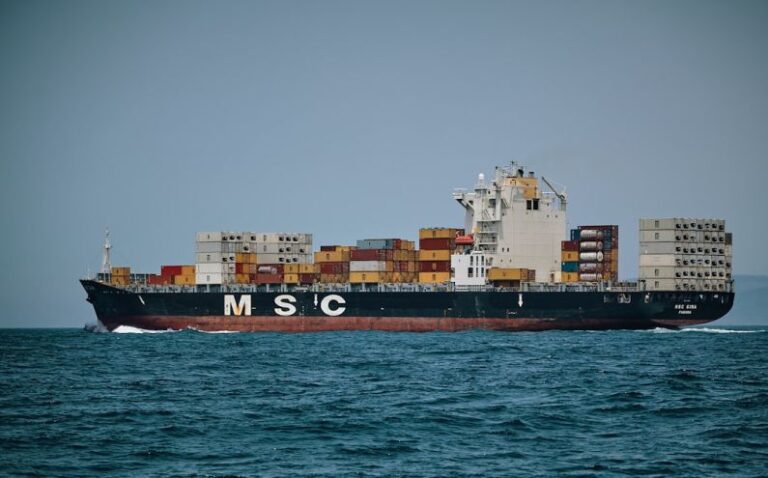How to Manage Risks in Your Supply Chain
In today’s interconnected global economy, managing risks in your supply chain is crucial to ensuring smooth operations and maintaining profitability. Supply chain disruptions can have far-reaching consequences, impacting production schedules, customer satisfaction, and ultimately the bottom line. To safeguard your supply chain against potential risks, it’s essential to adopt a proactive approach that identifies vulnerabilities and implements strategies to mitigate them effectively.
Identifying Potential Risks
The first step in managing risks in your supply chain is to identify potential vulnerabilities. Conduct a comprehensive risk assessment to pinpoint areas that could pose a threat to your operations. Common risks include natural disasters, geopolitical instability, supplier bankruptcy, quality control issues, and transportation delays. By understanding the specific risks that your supply chain faces, you can develop tailored strategies to address them.
Establishing Strong Relationships with Suppliers
Suppliers play a critical role in the success of your supply chain, making it essential to establish strong relationships based on trust and collaboration. Communicate openly with your suppliers to ensure transparency and visibility throughout the supply chain. Regular communication can help identify potential issues early on and allow for timely intervention to prevent disruptions. Additionally, consider diversifying your supplier base to reduce dependency on a single source and spread risk across multiple partners.
Implementing Robust Contingency Plans
Despite careful planning, unexpected events can still occur that disrupt your supply chain. To minimize the impact of such disruptions, it’s essential to have robust contingency plans in place. Develop alternative sourcing strategies, identify backup suppliers, and establish clear protocols for responding to emergencies. By proactively planning for contingencies, you can reduce the downtime caused by disruptions and maintain continuity in your operations.
Investing in Technology and Data Analytics
Technology can be a powerful tool in managing risks in your supply chain. Implementing supply chain management systems that provide real-time visibility into your operations can help identify potential risks before they escalate. Data analytics can also play a crucial role in risk management by providing insights into trends and patterns that could indicate potential vulnerabilities. By leveraging technology and data analytics, you can make more informed decisions and proactively address risks in your supply chain.
Monitoring Performance and KPIs
Monitoring key performance indicators (KPIs) is essential for assessing the effectiveness of your risk management strategies. Establish metrics that track the performance of your supply chain, such as on-time delivery rates, inventory levels, and supplier performance. Regularly review these KPIs to identify any deviations from expected performance and take corrective action as needed. By monitoring performance closely, you can quickly detect potential issues and address them before they impact your operations.
Continuous Improvement and Adaptation
Managing risks in your supply chain is an ongoing process that requires continuous improvement and adaptation. Regularly review and update your risk management strategies to reflect changes in your business environment and supply chain dynamics. Stay informed about emerging risks and trends that could impact your operations and be prepared to adjust your strategies accordingly. By adopting a proactive and adaptive approach to risk management, you can build a resilient supply chain that can withstand disruptions and drive long-term success.
Incorporating Sustainability Practices
Sustainability is an increasingly important consideration in supply chain risk management. Environmental, social, and governance (ESG) factors can pose significant risks to your supply chain if not adequately addressed. Incorporating sustainability practices into your supply chain operations can help mitigate these risks and enhance the resilience of your business. Consider working with suppliers who adhere to sustainable practices and implement initiatives to reduce the environmental impact of your operations. By prioritizing sustainability, you can not only manage risks effectively but also create long-term value for your business and stakeholders.
Embracing a Culture of Risk Management
Ultimately, managing risks in your supply chain requires a cultural shift that prioritizes proactive risk management and resilience. Encourage a culture of risk awareness and accountability throughout your organization, where employees are empowered to identify and address potential risks in their areas of responsibility. By fostering a culture of risk management, you can build a more resilient supply chain that can adapt to challenges and thrive in an increasingly complex business environment.
By following these strategies and embracing a proactive approach to risk management, you can safeguard your supply chain against potential disruptions and build a resilient, agile, and sustainable operation that can thrive in today’s dynamic business landscape.






